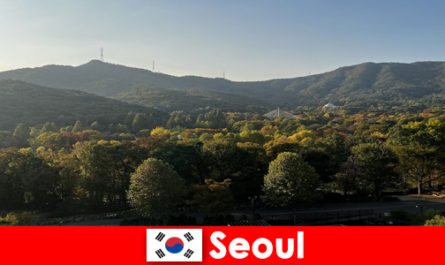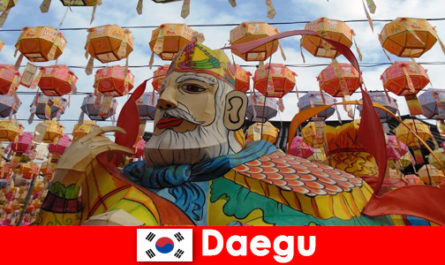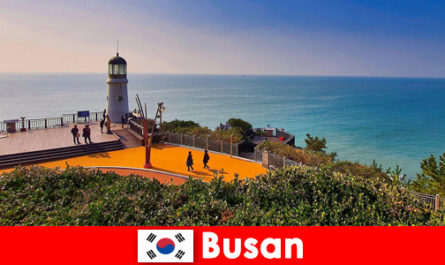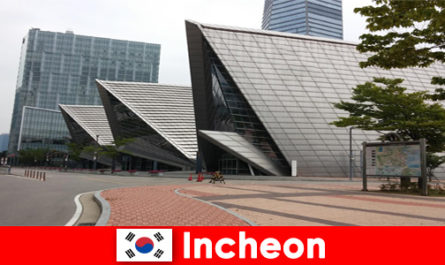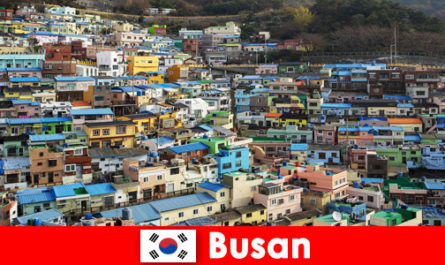The subtropical volcanic island of Jeju is part of the province of the same name in South Korea. It is the largest South Korean island and, together with other small islands, has been the smallest province since 1946. The island is located about 85 kilometers from mainland Korea. On the volcanic island, waves caress the white, fine sand of Hyeopjae Beach. Turquoise sea water invites you to take a refreshing dip. The water on the island’s beach remains shallow for a very long time, making it an ideal seaside resort for family vacations. In addition, a visit to the beach on Jeju is always worth a look, as the residents usually bathe in everyday clothes.
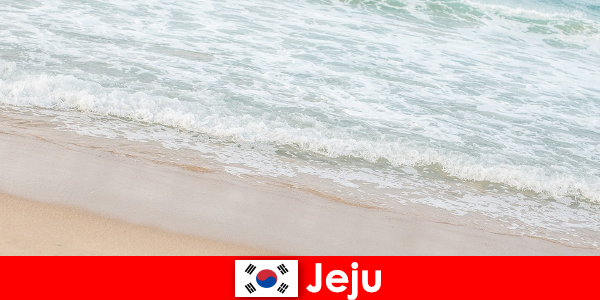
White beach and turquoise water
The island is made up of volcanic materials that originate from the largest mountain in South Korea, Hallasan. The extinct volcano forms the center of the island and has a crater lake, the Baegnokdam. The mountain range and the entire surrounding area are now a national park, with hundreds of volcanic hills and lava tunnels. The national park has 7 hiking routes, one of which leads to the beautiful crater lake. This invites you to one or the other hike on family vacation. You can also marvel at the only waterfall in Asia that falls directly into the sea. For fans of foreign cuisine, a visit to the Maeil Olle market is recommended. This is located about two kilometers from the Jeongbang waterfall and extends over 620 m. In addition, it is fully covered and therefore worth a visit in any weather. Another specialty of the island are the Haenyeo, the sea women. This is the name of the approximately six thousand islanders who still traditionally pursue the diving trade today. Seafood, algae, snails, mussels and other shellfish come to light. And all of this without a breathing apparatus! Armed only with a diving suit, mask and fins, these amazing women dive up to twenty meters deep.
Culture and sights
The mysterious, mystical island is considered a real gem by the Koreans. Every year it is a popular travel destination, especially for families and honeymooners. Until about a hundred years ago, the subtropical island paradise was almost completely cut off from the outside world. Many of the former shamanic religions are still celebrated on the island today and around 18,000 different deities are worshiped. Jeju is also famous for tangerines, tea and various mushrooms. Nature lovers will not only get their money’s worth with the breathtaking landscape in the beautiful Jejus National Park. The island is also rich in flora and fauna. Here you can admire, for example, camphor trees and rhododendrons or the famous white-headed woodpecker, which are special features of the region.
A symbol of the island are the famous Dolhareubangs, the grandfathers. Huge statues made of volcanic rock, which can be found all over the island. In the past these statues were supposed to serve as protection from demons, but now they have been assigned a role in reproduction, which makes them very popular with young couples and families. It is said that whoever rubs the nose of a dolhareubang will quickly receive a child’s blessing. The streamlined Choga stone houses are also worth a look. The flat buildings, with their thatched roofs, are surrounded by small walls or fences. The gates consist of three wooden beams, which in earlier times should indicate the presence or absence of the homeowner. For this purpose, the beams could easily be hung in and out. If all three beams were attached, nobody was home. With two suspended beams, the owner was away for a long time. If only one beam was attached, this indicated that the owner would return soon. Today the beam gates are mostly only available for decorative purposes.
 Dansk
Dansk Deutsch
Deutsch Español
Español Français
Français Indonesia
Indonesia Italiano
Italiano Magyar
Magyar Melayu
Melayu Nederlands
Nederlands Polski
Polski Português
Português Русский
Русский Română
Română Tiếng Việt
Tiếng Việt Türkçe
Türkçe Українська
Українська български
български Ελληνικα
Ελληνικα 한국어
한국어 हिन्दी
हिन्दी 日本語
日本語 简体中文
简体中文
